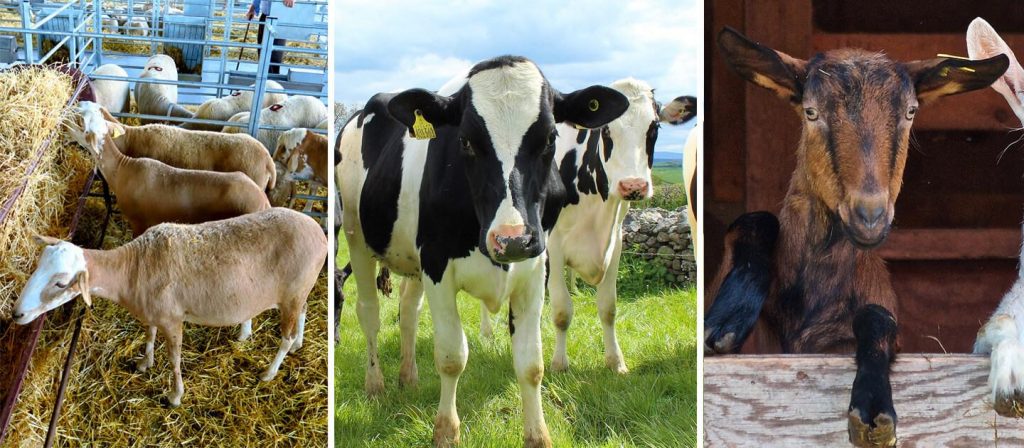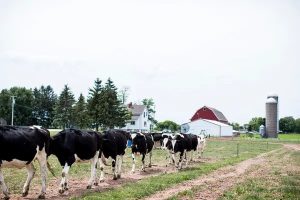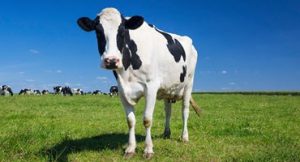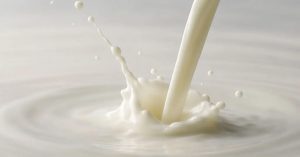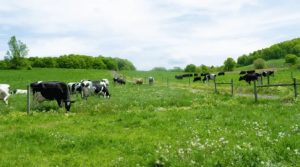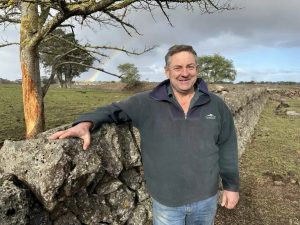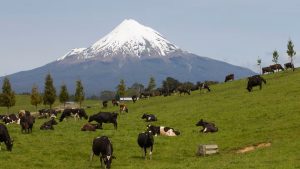
New England consumers depend on hundreds of dairy farms to produce milk for a variety of products they rely on every day. However, dairy products could be unavailable if the regional milk supply was interrupted by a devastating livestock foreign animal disease outbreak.
While bird flu (H5N1) outbreaks are affecting dairy herds in the Midwest and western United States (U.S.), a team of researchers at the University of Vermont (UVM) is focused on the impacts of foreign animal disease outbreaks on regional dairy production in the “New England milkshed.” The milkshed is defined by all sources of milk processed or manufactured into dairy products within New England, including farms in eastern New York state that ship milk into the region.
Dr. Julie Smith, veterinarian and research professor in the UVM Department of Animal and Veterinary Sciences, is leading a “regionalization” project that will collaborate with dairy farmers, dairy cooperatives, veterinarians, and federal and state regulatory officials. The goal is to define the boundaries for the milkshed that could reduce the risks of disease spread from livestock and dairy product movements.
New England milkshed producers and industry allies are invited to a one-day, interactive workshop during March 2025, to determine the feasibility and workability of establishing a regional protection zone as a foreign animal disease response strategy. At the end of the day, participants will weigh in on their willingness to see a regionalization plan move forward and develop recommendations for action.
- Event – Drawing the Line in the New England Milkshed: Regional Zoning for Dairy Industry Preparedness workshop.
- Date and time – March 27, 2025, from 10:00 a.m. to 3:00 p.m. EST.
- Location – Online Zoom meeting.
- Register at – https:/go.uvm.edu/register-regional-zoning-workshop
- Dairy producers in the milkshed who attend the workshop will be eligible for a stipend.
Please email sfsne@uvm.edu with questions about the workshop. Visit the Secure Food Supply New England website for more information about the regionalization project at https://go.uvm.edu/regional-zoning-website
“This workshop is designed to leverage local knowledge when considering where to set the boundaries of a regional zone. We want to maximize the dairy industry’s ability to keep milk moving to processing and to consumers in the event of a foreign animal disease outbreak anywhere in the country,” Smith stated.
A well-known expert in livestock emergency disease preparedness and farm biosecurity practices, Smith has secured over $11 million in funding in the past decade to support multi-disciplinary research and outreach that focuses on foreign, fast-moving diseases in swine and dairy production systems. In collaboration with the UVM Social-Ecological Gaming and Simulation Laboratory (SEGS), her team pioneered the use of digital experiments or “serious games” to understand what influences the decisions made by people in livestock operations that can affect the spread of disease.
In advance of the March workshop, Smith is leading a series of dairy community meetings with farmers and industry allies, to listen and gather input about communication challenges during a foreign animal disease outbreak. The input gathered from these community meetings will be important in exploring the development of an emergency communications framework for the milkshed. The dairy community meeting summaries are available at https://go.uvm.edu/milkshed-website
A foreign animal disease in livestock of serious concern for agricultural production—which has not been present in the U.S. since 1929—is foot-and-mouth disease (FMD). It is highly contagious and affects cloven-hoofed animals including cattle, sheep, goats, pigs, and wildlife such as deer and moose. FMD is classified as a foreign animal disease, but it is not considered a public health concern for humans. However, finding it in the U.S. would result in the devastating loss of export markets for the dairy, beef, and pork industries, because international sales of these commodities are dependent on the country’s FMD-free status.
The World Organization for Animal Health (WOAH) standards define zones that can be used for animal disease control and (or) for recognition of disease status (such as free without vaccination) by international trade partners. A geographic region can be designated as a containment zone or a protection zone depending on where a disease is relative to the zone. Requirements for zoning are disease specific. Applying for zone recognition requires presenting a plan for disease identification, observation, and tracking of live animals. The plan should be developed through the cooperation of industry and U.S. Department of Agriculture Veterinary Services.
This work is supported by the USDA National Institute of Food and Agriculture (NIFA), and in part, by a cooperative agreement from the USDA Animal and Plant Health Inspection Service (APHIS). It may not necessarily express NIFA or APHIS views.
You can now read the most important #news on #eDairyNews #Whatsapp channels!!!
🇺🇸 eDairy News INGLÊS: https://whatsapp.com/channel/0029VaKsjzGDTkJyIN6hcP1K
